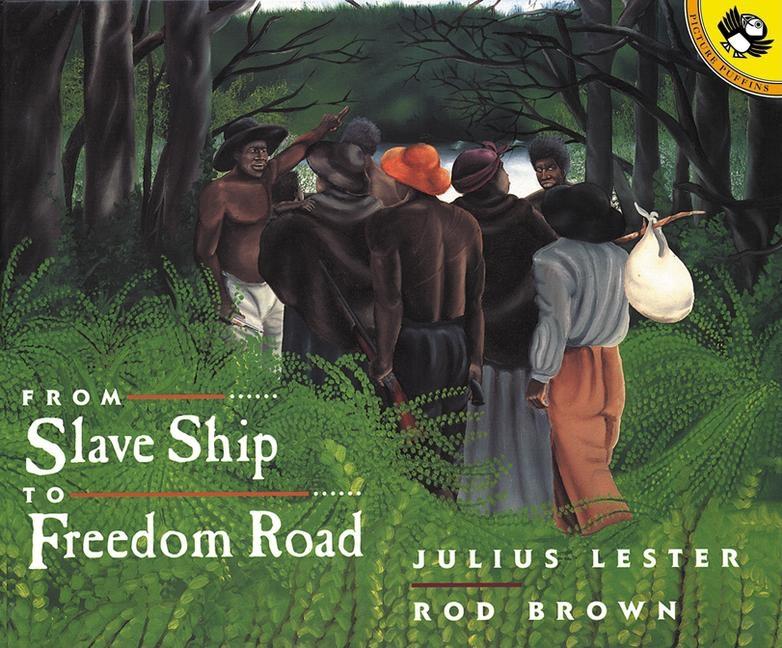Book Descriptions
for From Slave Ship to Freedom Road by Julius Lester and Rod Brown
From Cooperative Children's Book Center (CCBC)
Julius Lester was invited to write a narrative to accompany 21 of Rod Brown's disturbing paintings of scenes from African American history. He was a perfect choice, given his earlier writings about the "slave experience" for young people: To Be a Slave (1968), Long Journey Home (1972), and This Strange New Feeling (1982), all published by Dial. Lester himself made a perfect choice by creating multilayered narratives requiring responses from the viewer/reader. By shaping the book as he did, Lester assumed a basic amount of prior historical knowledge on the part of his readers, whoever they are. He wanted to challenge them to realize they bring their own perspective to the ideas and images in the book. Racism is real, and so is its legacy. Just because this is complicated doesn't imply that young people should not think about it. To encourage interaction with the book's content, Lester developed provocative "imagination exercises." Some are addressed to white people (it's their history, too), and others to African Americans. As readers of all backgrounds are confronted by the paintings, exercises, and other narratives, they react, because it's difficult, if not impossible, to maintain any emotional distance while handling this provocative volume. Lester writes, "Freedom. It's like a promise we are still learning how to keep." From Slave Ship to Freedom Road provides a challenging itinerary for one part of a supremely important journey. It's well worth the trip. Honor Book, 1998 CCBC Coretta Scott King Award Discussion: Author; Honor Book, 1998 CCBC Coretta Scott King Award Discussion: Illustrator. (Ages 11-15)
CCBC Choices 1998. © Cooperative Children's Book Center, Univ. of Wisconsin - Madison, 1998. Used with permission.
From the Publisher
" ... Award-winning author Julius Lester takes older children (and adults) on an intense, personal journey through the slave experience. As he gently explains the factual horrors of slave-ship conditions, auction blocks, plantation life, and the risks associated with escape, Lester consistently prods young readers with probing questions: 'How would I feel if that happened to me?" "Would you risk going to jail to help someone you didn't know?" "You are free, but are you?" Lester also asks us to imagine the voices and feelings of the African Americans in the illustrations--another brilliant call for active participation. Rod Brown's paintings are achingly vivid, so much so that a few may be too powerful for younger children. Certain depictions are difficult even for adults to bear: a lynched man with the bloody blows of a whip marking his back; slaves stacked seven-high in the hold of a ship, packed onto shelves with less room than the drawers of a morgue; and black bodies bobbing in the ocean. These are horrible images, but nonetheless historically accurate and important to remember. Brown took seven years to create these startling images, and his careful attention is reflected in the paintings' power and emotion."--Amazon
Publisher description retrieved from Google Books.


